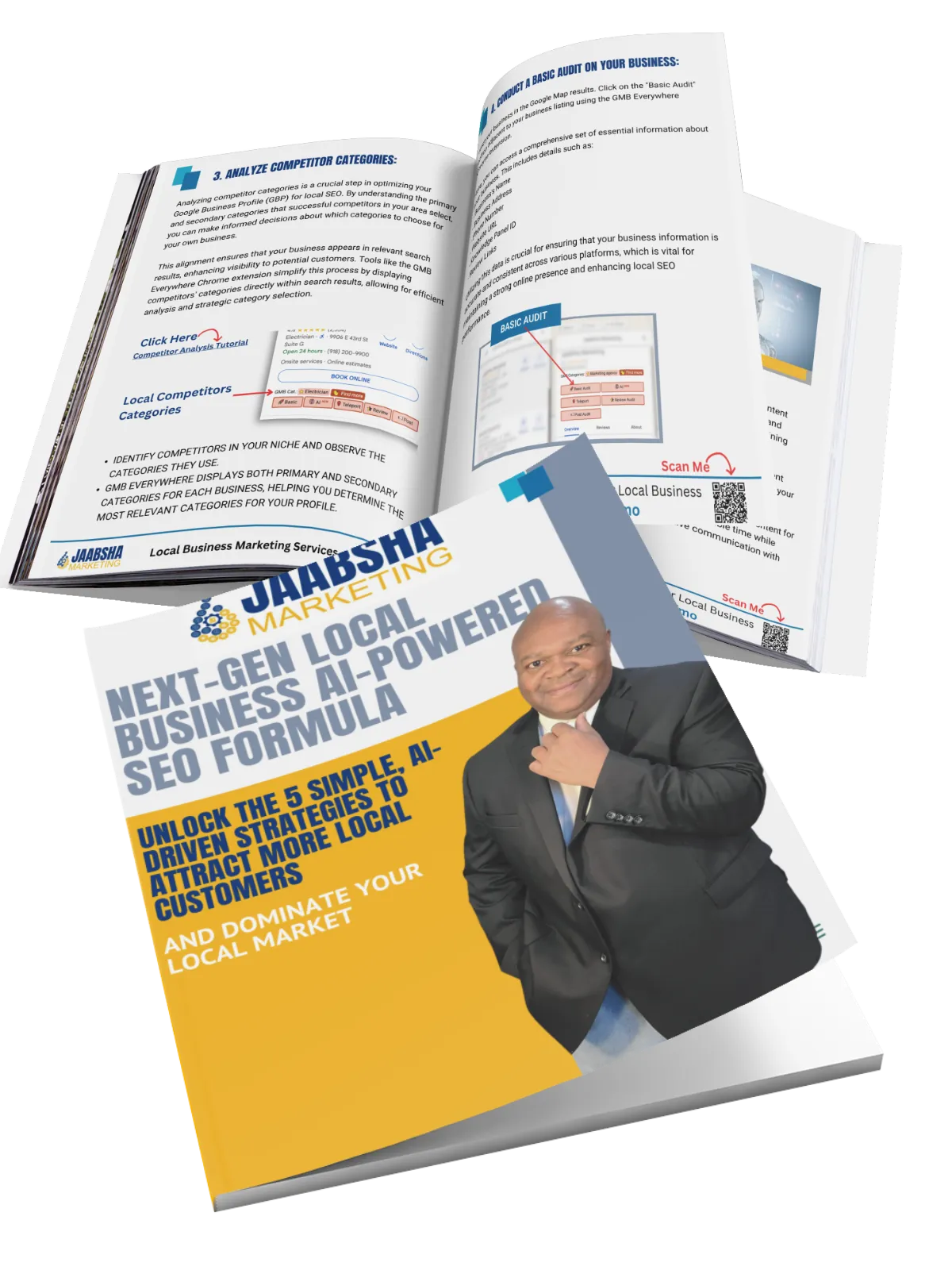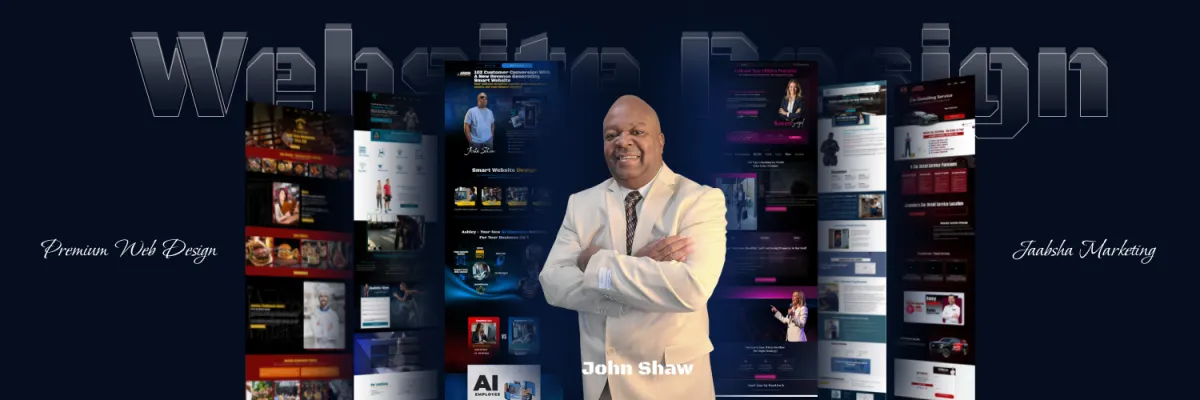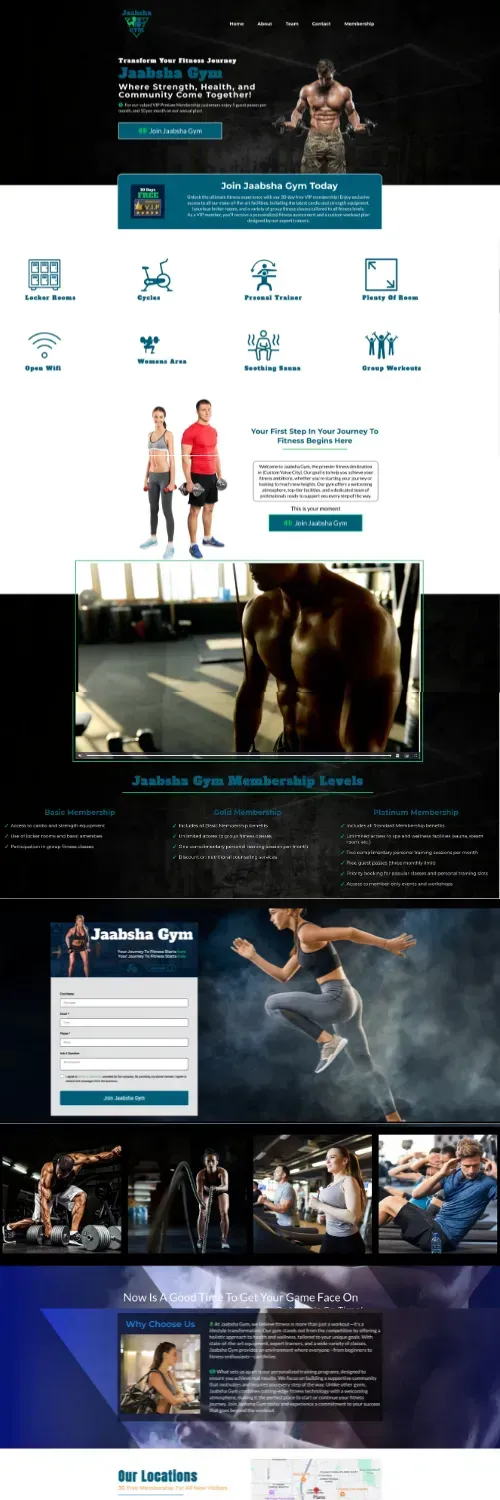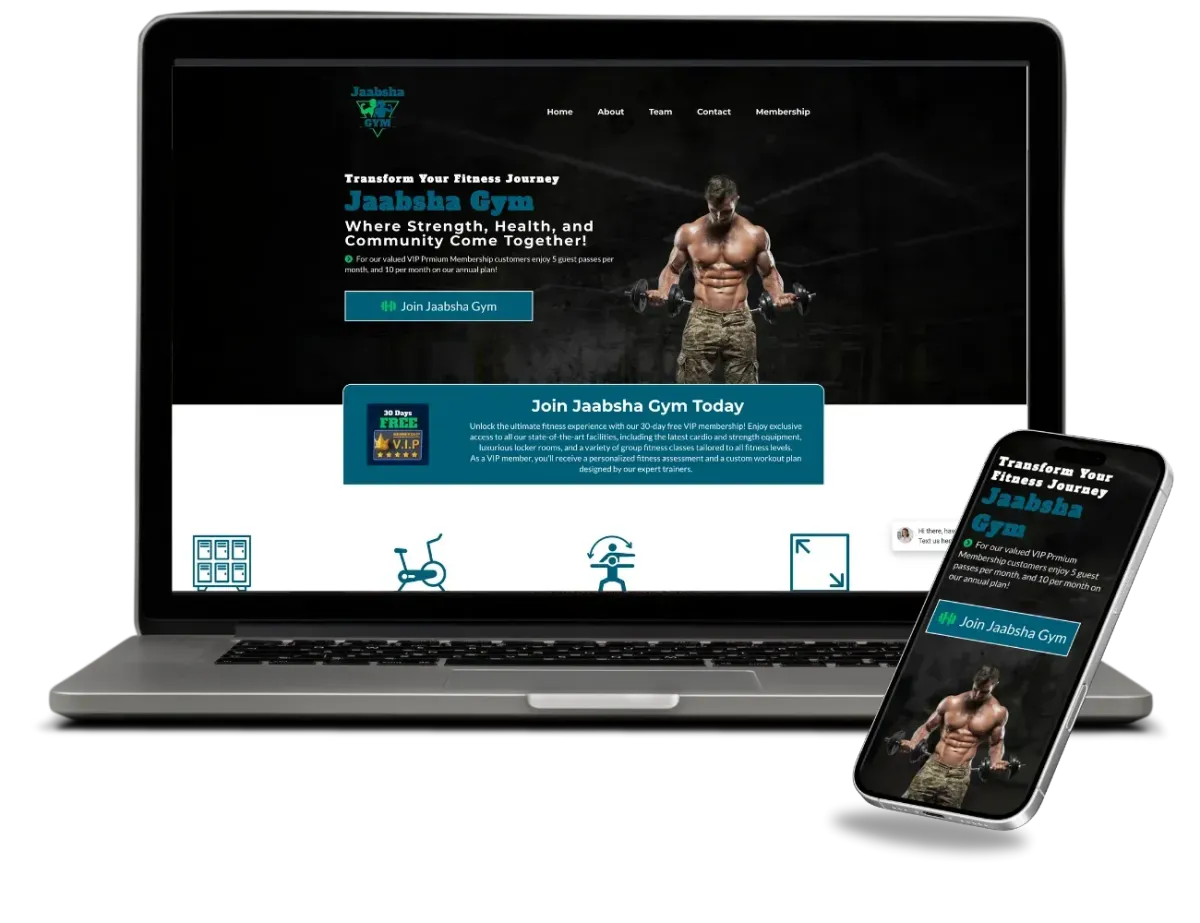
Website Design for Small Business: Essential Features for Growth
Website Design for Small Business: Essential Features for Growth
Introduction
A well-designed website serves as the cornerstone of small business success. Far more than just digital real estate, an effective small business website functions as a 24/7 salesperson, customer service representative, and brand ambassador all rolled into one. When executed properly, it becomes your most cost-effective marketing asset, working continuously to attract prospects, engage customers, and generate revenue.
Small businesses face unique challenges when approaching website design. Limited resources demand strategic allocation, making it crucial to invest in elements that deliver genuine business results rather than following fleeting trends or pursuing unnecessary complexity. The most successful small business websites maintain a careful balance---presenting a professional image while remaining focused on core business objectives.
This comprehensive guide explores the essential elements of effective small business website design. We'll examine the features that truly matter for driving growth, discuss practical approaches to implementation within reasonable budgets, and provide guidance for selecting the right design partners. Whether you're creating your first business website or upgrading an existing one, these insights will help you develop a digital presence that generates meaningful returns on investment.
Strategic Foundations for Small Business Websites
Defining Clear Business Objectives
Successful small business websites begin with clearly defined objectives. While many businesses start with vague goals like "improving online presence," effective implementation requires more specific targets that connect directly to business outcomes.

Common Small Business Website Objectives:
Generate qualified leads for service-based businesses
Drive online sales for retail or e-commerce operations
Reduce customer service inquiries through self-service information
Build credibility and trust with potential customers
Support the sales process with detailed product/service information
Increase foot traffic to physical locations
Capture email subscribers for ongoing marketing communication
Showcase portfolio examples or case studies of previous work
These objectives should directly support your broader business goals rather than existing in isolation. A landscaping company seeking new residential clients would prioritize lead generation features and compelling service galleries, while a specialty retailer might focus on product presentation and streamlined checkout processes. This alignment ensures your website investment directly contributes to business growth rather than simply creating an attractive but ineffective online presence.
The prioritization of objectives significantly impacts design decisions. Most small business websites must serve multiple purposes, but attempting to give equal emphasis to every possible function typically results in confused user experiences that accomplish nothing particularly well. Determining primary and secondary goals helps create focused experiences that guide visitors toward key actions while still supporting additional needs.
Measurable success criteria transform abstract goals into practical targets. Rather than simply aiming for "more leads," establish specific metrics like "increase contact form submissions by 25% within three months" or "achieve a 10% conversion rate from product page to checkout." These concrete targets provide clear direction for both initial design and ongoing optimization efforts.
Understanding Your Target Audience
Effective small business websites begin with a deep understanding of target customers. While many businesses have general ideas about their audience, website design requires more specific insights about online behavior, preferences, and needs.
Customer research need not involve expensive formal studies. Small businesses can gather valuable insights through:
Interviews with current customers about how they found you and what information they sought
Analysis of existing website data showing how visitors currently interact with your site
Surveys of your email list asking about online preferences and needs
Sales team input about common questions and concerns from prospects
Competitor website analysis to understand industry norms and opportunities for differentiation
These investigations should uncover specific information needs, common questions, decision criteria, and obstacles to purchase that your website must address. A residential roofing company might discover that potential customers primarily seek information about materials, warranties, and financing options before contacting contractors. This insight would directly inform content priorities and conversion paths.

Recognizing different audience segments often reveals the need for multiple user paths. A financial advisor serving both pre-retirees and small business owners would need distinct content addressing the specific concerns of each group, with clear navigational paths guiding these different visitors to relevant information. This segmentation prevents the confusion that occurs when websites attempt to address everyone with the same generic content.
Understanding the devices and contexts in which customers access your website significantly impacts design decisions. Local service businesses often see predominantly mobile traffic from customers searching on-the-go, while B2B companies might observe primarily desktop usage during business hours. These usage patterns should influence responsive design priorities and content organization to ensure optimal experiences in the most common scenarios.
Competitive Positioning and Differentiation
Small business websites operate in competitive environments where differentiation proves essential for success. Strategic analysis of competitor websites reveals opportunities to establish distinct positioning through both content and design approaches.
A thorough competitive analysis examines:

This analysis often reveals industry norms that visitors expect as well as opportunities for meaningful differentiation. A local accounting firm might discover that competitor websites primarily emphasize credentials and technical expertise, creating an opportunity to differentiate through approachable language and client-focused content that addresses specific financial challenges.
Visual differentiation requires careful balance. While distinctiveness helps memorable positioning, extreme departure from category norms can create confusion or credibility concerns. Effective small business websites typically maintain recognizable industry conventions while incorporating distinctive elements that reflect brand personality and positioning.
Messaging differentiation often proves more valuable than visual differences alone. Clear articulation of unique approaches, specialized expertise, or distinctive service models helps small businesses compete effectively against larger competitors. This messaging clarity should inform both explicit statements (like taglines and value propositions) and implicit communication through content focus, tone, and organization.

Essential Design Elements for Small Business Websites
Professional Visual Presentation
First impressions form rapidly online, making professional visual presentation essential for small business credibility. While elaborate design isn't necessary, quality visual elements signal that you take your business seriously and can be trusted with customer relationships.
Visual Elements That Signal Professionalism:
Clean, consistent layout with appropriate white space
High-quality logo presentation
Professional photography (not generic stock images)
Thoughtful color palette reflecting brand identity
Consistent typography with readable text
Appropriate contrast for easy reading
Proper scaling across devices
Quality icons and graphic elements
The visual presentation should authentically reflect your brand positioning rather than following generic templates. A pediatric dental practice would project warmth and approachability through friendly colors and reassuring imagery, while a corporate law firm might emphasize sophistication through more restrained design elements. This alignment helps attract ideal-fit customers while setting appropriate expectations about your business.
Professional photography makes a substantial difference in website effectiveness. Generic stock photos that visitors see across multiple websites create disconnection, while authentic images of your team, workspace, products, or completed work build genuine connection and trust. Even modest investment in professional photography typically yields significant returns through improved engagement and conversion rates.
Small businesses with limited design budgets should focus resources on key pages that directly impact conversion. The homepage, main service pages, about page, and contact sections typically deserve priority attention, while secondary information can utilize simpler layouts. This strategic allocation ensures the most critical interactions receive appropriate design support without exceeding available resources.
Strategic Homepage Design
The homepage serves as the gateway to your small business website, establishing first impressions while guiding visitors toward important content. Effective homepage design requires careful prioritization rather than attempting to showcase everything about your business at once.
An effective small business homepage typically includes:
Clear value proposition - Concise statement of what you offer and why it matters
Primary call to action - Obvious next step for your ideal customers
Concise service/product overview - Brief introduction to key offerings
Trust signals - Evidence of credibility and reliability
Recent social proof - Testimonials, reviews, or client logos
Secondary navigation paths - Clear routes to important content for different users
The most common homepage mistake involves cramming too much information into this critical space. When everything receives equal emphasis, nothing stands out---creating confusion rather than clarity. Strategic homepage design requires disciplined focus on the most important elements for business success, with secondary information accessible through clear navigation rather than competing for homepage attention.
Clear, compelling headlines make tremendous difference in homepage effectiveness. Generic statements like "Welcome to Our Website" waste valuable attention opportunity, while specific value-focused headlines like "Handcrafted Furniture Delivered in 14 Days" immediately communicate relevant benefits. These critical messages should receive significant attention during content development.
Visual hierarchy guides visitor attention through deliberate use of size, color, position, and contrast. The most important elements---typically value proposition and primary call to action---should visually dominate the page, with supporting elements receiving proportionally less visual emphasis. This deliberate organization helps visitors quickly understand what matters most rather than scanning aimlessly for relevant information.
Intuitive Navigation and Structure
Clear navigation represents one of the most critical elements of effective small business websites. When visitors cannot easily find information, they typically leave rather than struggling through confusing structures---regardless of how attractive the design might be.
Navigation design should prioritize visitor needs rather than internal company organization. While you might think about your business in terms of departments or historical service development, customers typically seek information based on their problems, goals, and questions. Organizing navigation around these customer-centered categories creates more intuitive experiences than mirroring internal company structure.
Navigation Best Practices for Small Business Websites:
Limit main navigation to 5-7 items maximum
Use clear, specific labels rather than clever or vague terms
Include contact information in header or prominent location
Provide obvious paths for different user types when appropriate
Ensure consistent navigation across the entire site
Make the company logo link back to the homepage
Include a simple footer navigation with essential links
Implement a "hamburger" menu for mobile that's easy to tap
Responsive navigation adaptation ensures usability across devices. Mobile navigation requires particular attention as smaller screens necessitate different approaches than desktop displays. The most effective small business websites implement navigation systems that transform appropriately for different screen sizes while maintaining consistent organization and terminology.

Search functionality becomes increasingly important as content volume grows. While very simple websites might function effectively without search capabilities, businesses with numerous products, services, or information resources should implement quality search functionality. This feature helps visitors who arrive with specific information needs rather than browsing intentions, improving user experience while reducing frustration.
Compelling Content That Converts
Content quality ultimately determines small business website effectiveness more than any design element. Strategic content development addresses customer needs and questions while positioning your offerings as ideal solutions.
Effective service and product pages focus on customer benefits rather than just features or specifications. While technical details matter, most purchasing decisions ultimately rest on the outcomes customers can expect. A commercial cleaning service that emphasizes "worry-free facility management so you can focus on your business" connects more effectively than one merely listing cleaning tasks performed. This benefit-focused approach requires understanding customer motivations and priorities.
Clarity trumps cleverness in small business website content. While creative writing has its place, visitors primarily seek clear information about how you can solve their problems. Straightforward, specific language typically outperforms clever phrasing that sacrifices clarity for creativity. This principle applies particularly to headlines, navigation labels, and calls to action where comprehension directly impacts conversion.
Strategic content length balances comprehensiveness with readability. The appropriate depth varies by page purpose and visitor needs---service pages typically require sufficient detail to address common questions and overcome objections, while contact pages benefit from brevity and focus. This thoughtful variation ensures visitors find necessary information without overwhelming them with excessive content when simpler messages would be more effective.
Visual content complements text to enhance understanding and engagement. Quality photographs, informative graphics, process diagrams, and occasional videos can explain complex concepts more effectively than text alone. These visual elements prove particularly valuable for products with physical attributes, services with visual outcomes, or processes that benefit from step-by-step illustration.
Effective Lead Generation Elements
For service-based small businesses, website lead generation often represents the primary success metric. Strategic implementation of conversion elements throughout the site transforms visitor interest into tangible business opportunities.
Contact forms require careful design to maximize completion rates. The most effective forms:
Request only essential information - Each additional field reduces completion rates
Provide clear value proposition - Explain what happens after submission
Include appropriate privacy reassurance - Address concerns about information use
Offer multiple contact options - Accommodate different communication preferences
Feature obvious submission buttons - Make the final action unmistakable
Confirm successful submission - Provide clear next-step information
Strategic placement of conversion opportunities throughout the site captures interest at different stages of consideration. Beyond primary contact forms, effective small business websites implement contextual conversion elements like service-specific consultations, downloadable resources addressing common questions, or specialized contact options for different needs. This distributed approach accommodates varying readiness levels among visitors.
Call tracking implementation helps measure offline conversions from website visitors. Since many small business customers prefer phone contact to form submission, tracking systems that assign unique phone numbers to website visitors provide crucial data about website effectiveness. This measurement connects online marketing efforts to actual business results, enabling more informed optimization decisions.
Chat functionality offers immediate assistance for visitors with questions or concerns. While 24/7 staffed chat exceeds most small business resources, strategic implementation during business hours or through AI-assisted tools provides valuable conversion support without overwhelming operational capacity. This immediate response option often captures opportunities that would otherwise be lost when visitors encounter obstacles to conversion.
Mobile-First Implementation
Mobile optimization has evolved from optional enhancement to fundamental requirement for small business websites. With mobile devices accounting for more than half of web traffic and search engines prioritizing mobile experience in rankings, effective implementation directly impacts both user experience and visibility.
Responsive design represents the standard approach for accommodating multiple devices. This methodology creates layouts that automatically adapt to different screen sizes, ensuring appropriate presentation across devices without maintaining separate mobile and desktop versions. Quality responsive implementation requires thoughtful planning rather than simply shrinking desktop layouts to fit smaller screens.
Mobile Optimization Priorities:
Touch-friendly navigation and interactive elements
Appropriate text size without requiring zoom
Properly spaced buttons and links to prevent mis-taps
Streamlined forms optimized for mobile completion
Fast loading through image optimization and efficient code
Click-to-call phone numbers for immediate contact
Simplified content hierarchy for smaller screens
Location information with mapping integration
Local small businesses should pay particular attention to location-based mobile functions. Customers increasingly search for nearby services using mobile devices, making features like embedded maps, clear directions, and click-to-navigate functionality particularly valuable. These location-focused elements help convert mobile searches into physical visits---a critical conversion path for local businesses.
Mobile performance significantly impacts both user experience and search visibility. Page speed receives particular importance on mobile devices, where loading delays cause higher abandonment rates than on desktop computers. Optimizing image sizes, implementing efficient code, and utilizing appropriate caching mechanisms help ensure mobile visitors experience quick-loading pages regardless of connection quality.
Mobile testing across multiple devices ensures comprehensive optimization. While emulators and responsive design tools help identify major issues, testing on actual smartphones and tablets reveals subtler problems that might affect user experience. This hands-on verification helps prevent conversion-killing problems that might not be apparent during development.
Technical Foundations for Small Business Success
Performance Optimization
Website speed directly impacts both user experience and search rankings, making performance optimization essential for small business success. Research consistently shows that even small delays significantly increase abandonment rates, while Google explicitly includes page speed in ranking algorithms.
Image optimization typically offers the most significant performance improvement opportunity for small business websites. Properly sized, compressed images can reduce page weight by 70% or more without noticeable quality loss. This optimization includes:
Resizing images to display dimensions rather than uploading oversized files
Compressing files to reduce size without quality degradation
Using appropriate formats (JPG for photos, PNG for graphics with transparency)
Implementing responsive images that load smaller versions on mobile devices
Applying lazy loading so images load only as visitors scroll to them
Code efficiency significantly impacts loading speed, particularly on mobile devices. Quality small business websites minimize unnecessary scripts, combine files where appropriate, and implement asynchronous loading for non-critical elements. These technical optimizations ensure core content appears quickly while secondary functions load without delaying initial display.

Hosting quality plays crucial role in website performance. While budget hosting may seem attractive for cost-conscious small businesses, the performance penalties often outweigh the modest savings. Investing in quality hosting with appropriate server resources, content delivery networks, and reliable infrastructure typically delivers better business results through improved user experience and search visibility.
Regular performance monitoring helps identify issues before they impact business results. Automated testing tools that evaluate loading speed, resource efficiency, and technical performance provide early warning of developing problems. This proactive approach prevents the gradual performance degradation that often occurs as websites evolve over time.
SEO Fundamentals
Search visibility remains essential for most small businesses, making search engine optimization (SEO) a fundamental website requirement rather than an optional enhancement. While comprehensive SEO involves ongoing effort, certain technical foundations must be implemented during website development.
Essential SEO Elements for Small Business Websites:
Logical site structure with clear hierarchy
Clean, descriptive URLs for all pages
Proper page titles targeting relevant keywords
Meta descriptions that encourage clicks from search results
Structured heading tags (H1, H2, H3) organizing content
Mobile-friendly, responsive implementation
Fast loading speed across devices
Secure implementation with HTTPS
Schema markup for local business information
XML sitemap for search engine indexing
Local SEO elements deserve particular attention for businesses serving specific geographic areas. Consistent NAP (Name, Address, Phone) information, proper schema markup, and Google Business Profile integration help establish location relevance. These local signals significantly impact visibility for proximity-based searches, which represent major traffic sources for many small businesses.
Content optimization balances search visibility with user experience. While keyword inclusion remains important, effective small business websites focus primarily on addressing customer questions and needs rather than artificially inserting search terms. This natural, helpful approach typically generates better results than outdated keyword-stuffing techniques that damage readability.

Technical SEO implementation prevents common issues that limit search visibility. Proper redirect handling, duplicate content prevention, and crawlability optimization ensure search engines can effectively index your content. These technical foundations enable ongoing content and link-building efforts to generate maximum results rather than fighting against structural limitations.
Security Implementation
Website security has become increasingly important for businesses of all sizes. Beyond protecting sensitive information, security measures impact customer trust, payment processing capabilities, and even search rankings.
SSL certification represents the minimum security standard for business websites. This technology encrypts data transmitted between visitors and your website, protecting information while signaling trustworthiness through the padlock icon in browser address bars. Beyond these direct benefits, SSL implementation positively influences search rankings while preventing "not secure" warnings that alarm potential customers.
Regular software updates provide essential protection against emerging threats. Content management systems, plugins, themes, and other website components require consistent maintenance to address security vulnerabilities. Establishing systematic update procedures---whether handled internally or through maintenance agreements with developers---prevents exploitation of known security weaknesses.
Backup systems ensure business continuity even if security incidents occur. Comprehensive backup strategies include:
Regular automated backups of all website files and databases
Secure off-site storage separate from the main hosting environment
Verified restoration procedures tested periodically to ensure functionality
Appropriate retention policies maintaining multiple historical versions
Monitoring systems confirming successful backup completion
These protection measures safeguard against both malicious attacks and technical failures, ensuring your business can quickly recover from disruptions without catastrophic data loss.
Form protection mechanisms prevent spam submissions that plague many small business websites. CAPTCHA systems, honeypot fields, and other anti-spam measures help ensure that contact forms generate legitimate business inquiries rather than automated spam. This protection saves time while ensuring real customer messages receive proper attention.
Implementation Approaches for Small Businesses
DIY Website Builders vs. Professional Design
Small businesses face fundamental choices about website implementation approaches, each offering different balances of cost, control, quality, and ongoing flexibility.
DIY website builder platforms like Wix, Squarespace, and Shopify have evolved significantly, offering increasingly sophisticated capabilities without technical expertise requirements. These platforms provide:
Advantages of Website Builders:
Lower initial cost compared to custom development
Faster implementation timelines
No technical knowledge requirements
Included hosting and security management
Built-in responsive functionality
Integrated basic SEO features
Standardized update procedures
Limitations of Website Builders:
Design constraints within template frameworks
Functional limitations for complex requirements
Potential performance issues affecting speed
Limited customization capabilities
Platform dependency creating switching barriers
Ongoing subscription costs rather than ownership
Potential scalability challenges as businesses grow
For many small businesses with straightforward needs and limited budgets, quality builder platforms provide reasonable solutions that balance professional appearance with affordability. Businesses with standard service presentation, basic contact needs, and simple e-commerce requirements can often achieve effective results through these platforms when implemented thoughtfully.
Professional website design offers greater customization, optimization potential, and alignment with specific business requirements. This approach typically involves either agencies or freelance professionals who create custom-designed websites tailored to particular business needs. The comprehensive approach provides:
Advantages of Professional Design:
Custom visual design aligned with brand identity
Tailored functionality addressing specific business requirements
Enhanced performance optimization possibilities
Greater control over user experience and conversion paths
Specialized expertise in design, development, and strategy
Ownership of the final product rather than ongoing platform subscription
Advanced capabilities for integration with business systems
Considerations with Professional Design:
Higher initial investment than builder platforms
Longer implementation timelines
Need for clear requirements and feedback processes
Maintenance considerations after launch
Potential ongoing support costs for updates and changes
Greater internal involvement in planning and review processes
The appropriate choice depends on specific business circumstances, budget constraints, technical requirements, and internal capabilities. Many small businesses begin with builder platforms during early growth stages, then transition to professional design as their requirements become more sophisticated and budgets allow for greater investment in digital presence.
Content Management Systems for Small Business
For businesses implementing professional websites rather than using builder platforms, content management system (CMS) selection significantly impacts both initial development and ongoing management.
WordPress remains the most popular CMS for small business websites, offering a balance of flexibility, extensive plugin ecosystem, and widespread developer familiarity. This open-source platform powers everything from basic business websites to sophisticated e-commerce operations, with advantages including:
Extensive customization possibilities through themes and plugins
Straightforward content editing for non-technical users
Robust developer community providing ongoing improvements
Extensive hosting options across numerous providers
Scalability from simple to complex implementations
While WordPress offers tremendous flexibility, it requires proper setup and maintenance to ensure security and performance. Quality implementation includes security hardening, performance optimization, and appropriate plugin selection rather than simply installing default configurations.
Other CMS options offer advantages for specific business requirements. Specialized systems like Shopify provide focused e-commerce capabilities, while enterprise platforms like Drupal offer advanced security and complex content relationships for businesses with sophisticated needs. The appropriate choice depends on your specific functionality requirements, internal technical capabilities, and budget considerations.
When selecting a CMS, consider both immediate needs and future growth requirements. Platform migrations typically involve significant cost and complexity, making it worthwhile to select systems that can accommodate reasonable business evolution. This forward-looking approach prevents painful transitions as your business expands its digital requirements.
Budget Considerations and Prioritization
Small businesses typically face budget constraints that necessitate strategic prioritization rather than implementing every possible website feature at once. Effective approaches focus initial investment on elements with direct business impact while planning for phased implementation of additional capabilities.

When working with limited budgets, prioritize these essential elements:
Phase 1 Priorities (Essential Foundation):
Professional, mobile-responsive design
Clear service/product presentation
Effective contact/conversion mechanisms
Basic SEO implementation
Security fundamentals
Critical content addressing main customer questions
These core elements establish functional business presence that drives initial results while creating foundation for future enhancement. By focusing on these essentials rather than diluting resources across too many features, small businesses can achieve professional implementation within reasonable budgets.
Phased implementation planning allows for systematic expansion as resources permit. Rather than viewing website development as a one-time project, consider it an evolving business asset with planned enhancement stages. This approach might include:
Phase 2 Additions (Enhanced Functionality):
Expanded content addressing additional customer questions
Blog or resource section demonstrating expertise
Enhanced portfolio or project galleries
Customer testimonial systems
Basic marketing automation elements
Additional conversion paths for different user types
Phase 3 Expansion (Advanced Capabilities):
Interactive tools or calculators
Customer portal functionality
Advanced e-commerce capabilities
Personalization features
Integration with business systems
Video content implementation
This staged approach allows businesses to spread investment over time while prioritizing elements with greatest impact on business results. Each phase builds upon previous implementation rather than requiring complete redesign, maximizing long-term return on digital investment.
ROI consideration should guide all website investment decisions. Rather than viewing website development as a necessary expense, evaluate potential features based on their likely business impact. A home services business might prioritize lead generation functionality that directly produces revenue opportunities, while an educational organization might emphasize content resources that demonstrate expertise and build enrollment interest.
Ongoing Management and Growth
Maintenance Best Practices
Website launch represents the beginning rather than the conclusion of effective digital presence. Ongoing maintenance ensures security, performance, and continued alignment with business needs as both technology and markets evolve.
Regular update schedules provide critical security protection while maintaining compatibility with evolving browser standards. Effective maintenance includes:
Content management system updates applying security patches
Plugin and extension updates addressing vulnerabilities
Theme compatibility verification after system changes
Functionality testing across major browsers
Performance monitoring to identify developing issues
These fundamental maintenance activities prevent the security vulnerabilities and technical problems that often develop when websites remain static for extended periods.
Content freshness significantly impacts both search visibility and user engagement. Establishing regular content review processes helps ensure information remains current and relevant. This ongoing attention prevents the outdated information problems that damage credibility when services change, team members depart, or offerings evolve without corresponding website updates.
Backup systems require regular verification rather than mere implementation. Periodic restoration testing confirms that backup procedures function as expected, preventing unpleasant surprises during actual recovery situations. This proactive verification ensures business continuity protection rather than theoretical safeguards that might fail when needed.
Analytics review provides insights for continuous improvement. Regular examination of user behavior, conversion patterns, and content performance reveals optimization opportunities that might otherwise remain undiscovered. This data-informed approach ensures ongoing enhancement rather than static presence that gradually loses effectiveness.
Analytics and Continuous Improvement
Data-driven optimization transforms websites from static assets to continuously improving business tools. Implementing proper measurement systems and review processes enables ongoing refinement based on actual user behavior rather than assumptions.
Google Analytics implementation provides essential visibility into website performance. Proper setup includes:
Key Analytics Implementation Elements:
Goal tracking for important conversions
Event monitoring for significant user interactions
Page value attribution connecting content to outcomes
User flow analysis revealing navigation patterns
Traffic source evaluation showing acquisition channels
Device category reporting highlighting mobile/desktop differences
Session duration and depth metrics indicating engagement
This measurement foundation transforms subjective opinions about website effectiveness into objective evaluation based on actual results. The insights gained guide enhancement efforts toward genuine business impact rather than cosmetic changes without performance improvement.
Regular performance review establishes a continuous improvement cycle. Quarterly analysis sessions examining key metrics, identifying trends, and planning targeted enhancement typically provide appropriate balance between responsive optimization and excessive tinkering. This structured approach ensures consistent progress while maintaining focus on genuine improvement opportunities.
User testing provides qualitative insights beyond what analytics data alone can reveal. Periodic observation of actual users attempting to complete key website tasks often uncovers usability issues not apparent through quantitative data. Even informal testing with a handful of representative users can identify significant improvement opportunities.
Conversion optimization represents the most direct path to improved business results from existing traffic. Systematic testing of different approaches to key conversion elements---from button placement and color to headline phrasing and form design---often yields substantial performance improvements without requiring additional visitors. This focused optimization typically provides better return on investment than cosmetic changes affecting non-critical elements.
Content Marketing Integration
For many small businesses, the website serves as foundation for broader content marketing efforts that build visibility, demonstrate expertise, and nurture customer relationships. Effective integration connects website structure with ongoing content initiatives.
Blog or resource section implementation provides infrastructure for consistent publishing. Beyond basic posting capabilities, effective content platforms include:
Logical categorization systems organizing content by topic
Tag functionality for cross-referencing related material
Author attribution for team contributions
Social sharing integration facilitating content distribution
Email signup opportunities converting readers to subscribers
These fundamental capabilities transform basic website presence into content marketing hub that supports ongoing audience development and engagement.
Content planning aligns publishing efforts with business objectives and audience needs. Rather than random topic selection, effective small business content programs develop systematic approaches addressing:

This strategic approach ensures content investment generates business value
Email integration connects website content with nurturing capabilities. By implementing appropriate signup opportunities and automation systems, small businesses transform one-time website visits into ongoing relationships. This connection between website content and email marketing creates sustained engagement opportunities that typically generate higher lifetime customer value than isolated website interactions alone.
Social media coordination amplifies website content reach while driving additional traffic. Rather than maintaining entirely separate social content strategies, effective small businesses use their websites as content hubs with social channels serving as distribution and conversation mechanisms. This integrated approach maximizes return on content investment while creating multiple pathways for audience engagement.
Conclusion
Effective small business website design balances professional quality with practical business requirements. Rather than pursuing unnecessary complexity or chasing fleeting trends, successful implementation focuses on fundamental elements that directly support business objectives---from clear service presentation and compelling calls to action to appropriate technical foundations and ongoing management processes.
The most successful small business websites continuously evolve based on performance data and business development. Rather than static "set and forget" assets, they function as dynamic business tools that adapt to changing customer needs, market conditions, and company offerings. This evolutionary approach transforms websites from periodic expenses into ongoing investments generating measurable business returns.
Whether implementing your first small business website or enhancing existing digital presence, focus resources on elements with direct impact on customer acquisition and relationship development. By prioritizing these business-critical functions over purely decorative features, even modest budgets can produce websites that meaningfully contribute to business growth and customer satisfaction.
Remember that effective website presence combines quality implementation with ongoing attention. The small businesses achieving greatest digital success view their websites as core business assets deserving regular investment rather than one-time projects completed and forgotten. This sustained commitment to digital excellence typically generates competitive advantage that drives long-term business growth.









